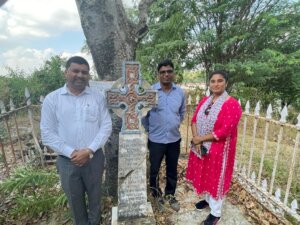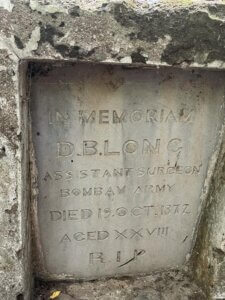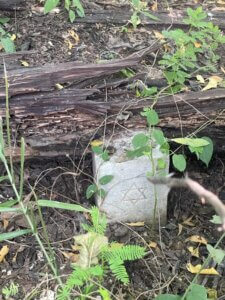MISSION TO THE BHILS
(This article by Dr Rosie Llewellyn-Jones first appeared in the Spring 2024 issue of Chowkidar, Volume 17, Number 1)
The Bhils are one of the most interesting, and under-researched pre-Aryan tribes living in western India. Fiercely independent, with their own language, dress and beliefs, they do not conform to Hindu ideology nor to the caste system. In 1871 they were classified as a ‘criminal tribe’ by the British Government in India, due in part to their ‘lawless character and their addiction to drink’ which was a locally-made alcohol, distilled from the flowers of the Madhuca tree. Ten years later there was a Bhil uprising when an attempt was made to include them in the first all-India census, together with a prohibition on alcohol, the establishment of Police and Customs in their territories and a ban ‘on the killing of witches’. A British garrison had been established at Kherwara, in southern Rajputana and as tribal unrest increased, reinforcements were sent up from the Bombay Presidency Army. The Maharana of Udaipur sent his own Brigade under the command of the maverick Irishman Thomas Lonorgan who had arrived in a travelling circus. (see Chowkidar Vol. 9. No. 5).
The uprising was put down with unwonted severity, and the plight of the Bhils prompted the Church Mission Society to send the Revd. Charles Stewart Thompson to Kherwara to bring education, medicine and Christianity to the tribal people. At the age of 29 Thompson travelled first to Udaipur, then a remote, walled city, where he stayed with Dr James Shepherd of the Rajputana Presbyterian Mission for a year, while learning Hindi. He had undertaken some medical training in England, and the plan was to bring help to the Bhils despite their aversion to any kind of ‘foreign’ intervention. Patiently Thompson set up an open-air clinic in a village near Kherwara and gradually the local tribespeople began to trust him. He was helped by an Indian Christian who translated for him until Thompson himself learnt the language and published the first Bhili grammar and vocabulary book Rudiments of the Bhili Language in 1895. He set up twelve schools in the area, including one for girls, a radical idea at that time and in that place. Gradually the Bhils entered the mission schools as students and some later became teachers at these schools. There were also some Bhil converts to Christianity, although they faced ostracism and even death threats from their families.
While Thompson was on furlough in England, after fifteen and a half years of uninterrupted work, a severe famine occurred that particularly affected the Bhil heartlands. He returned to Kherwara and immediately set up relief centres and an orphanage, and ordered food supplies from the Punjab. Thompson found many starving children in the surrounding villages, whose parents had simply deserted them, and by April 1900 he was feeding over 5,000 children a day.
Then tragically Thompson caught cholera and fell ill in a remote village. Bhil tribesmen carried him for nine hours towards Kherwara and European aid, but he died under a tree at Kanbai, twelve miles away from the help that might have saved him. He is buried here, in a simple, isolated grave, which was photographed in October 2023 by Jill Jackson-Hill who travelled to this still remote area.

The inscription reads:
‘Sacred to the memory of the Rev Charles Stewart Thompson of the
Church Missionary Society, for 20 years missionary to the Bhils, who
died of cholera on May 19, 1900, while ministering to the necessities
of this famine-stricken people’
This is part of her report:
‘The village of Kanbai is deep in tribal territory, and has a reasonably large Christian community. It is the site of the burial place and memorial to Thompson who, I discovered, is a local hero, and the grave is a pilgrimage place not just for the local Christians but also for the sizeable Christian community in Gujarat, whose families were ministered to by Thompson and his followers. The Gujaratis are frequent visitors to this area now that the new road has been completed, and it is possible this could be a very positive development in the maintenance of the site’.
‘I met the elected village representative, a Christian called Dolly Gomati, and she would be happy to be the liaison in any involvement by BACSA. The memorial lies on land belonging to a local farmer. I met his wife, who does regularly clean the grave and allows access to visitors. It is quite inaccessible up a steep track and through the farmyard, but is reasonably well maintained. The Bhils of the region were ready converts given the poverty driven by droughts, famines and cholera epidemics. Their descendants are active in carrying on some of the work that the missions started, especially regarding the health and welfare of younger communities.’
During her annual visits to Rajasthan, Mrs Jackson-Hill makes a point of seeking out non-tourist destinations:
‘So I find churches, many of which are truly off the beaten track – many of them are old mission centres where schools and other community centres still exist run by descendants of converts – and I try to make contact with the pastor or priest. I find them very willing to help me. They usually find someone in the congregation who knows where old graveyards are, old churches, old missions. And with the help of my driver I go out and explore! It involves a fair bit of drinking chai, climbing up hills, finding dead ends, visiting local police stations, village officials and army base commanders, making donations to churches and admiring local initiatives. In the case of Udaipur BACSA had given me the name of a couple of places on its cemetery register and I just persevered with locals until I got the names and the correct locations of places. Kherwara and Kanbai were amongst them.’
Kherwara Cemetery
The cemetery at Kherwara, which was photographed, is completely overgrown. It would have served as the cantonment cemetery after the Mewar Bhil Corps was established here in the 1840s, commanded by British officers. Among the tombstones still visible is that to ‘D.B. Long Assistant Surgeon, Bombay Army’, who died in 1872, and a small stone marking a Jewish grave with the Star of David, though with no visible name.

Surgeon, Bombay Army, died
19 Oct 1872, aged 28
Photo: Jill Jackson-Hill, 2023

Photo: Jill Jackson-Hill, 2023
BACSA is grateful to Jill Jackson-Hill for her discoveries, photographs, and her commendable initiative in seeking out these lesser-known cemeteries.
Rosie Llewellyn-Jones
